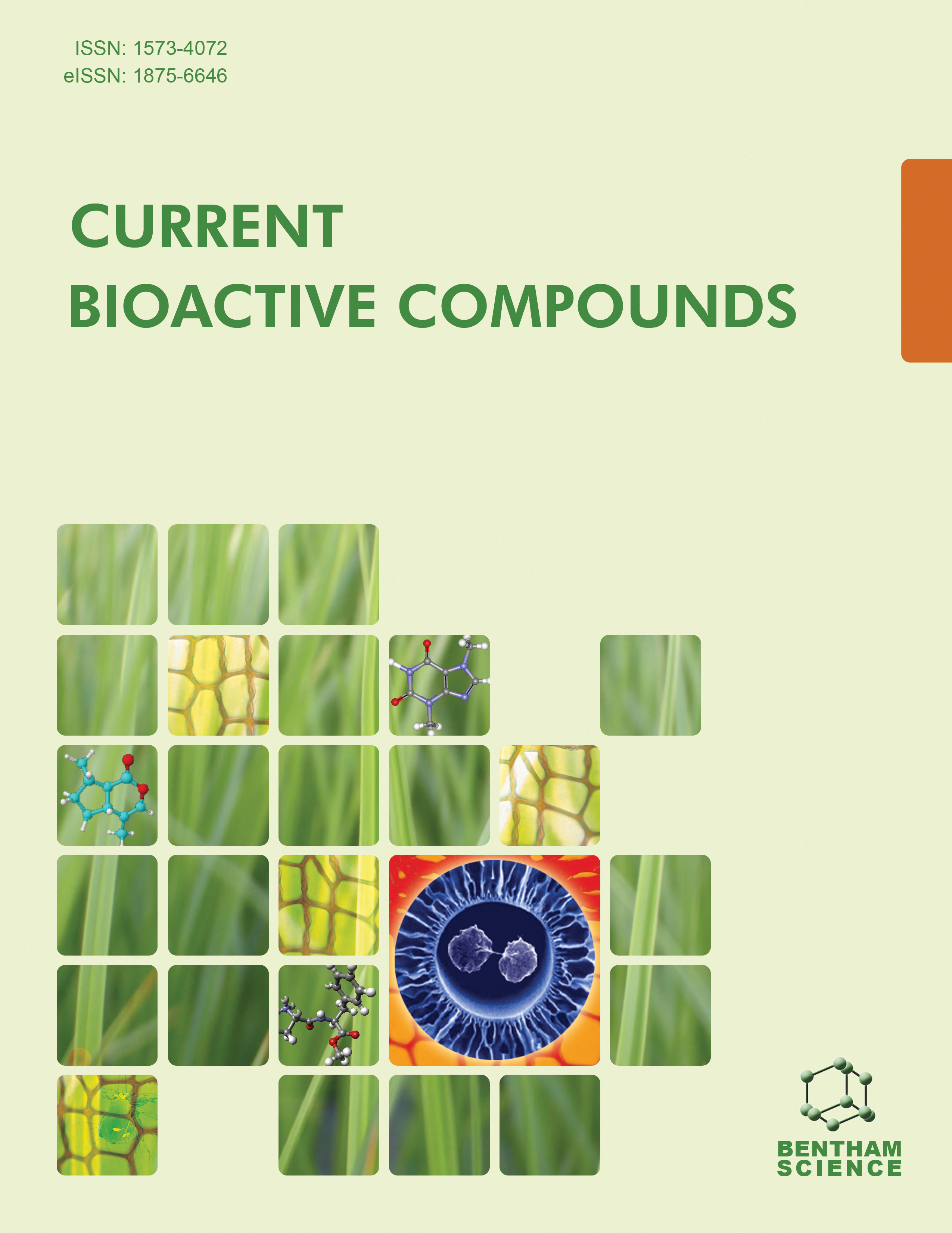- Home
- A-Z Publications
- Current Bioactive Compounds
- Previous Issues
- Volume 10, Issue 2, 2014
Current Bioactive Compounds - Volume 10, Issue 2, 2014
Volume 10, Issue 2, 2014
-
-
Editorial (Thematic Issue: New Advances of Drug Design in Cancer Disease Part I)
More LessThis issue is aimed for anyone who is interested or works with drug design research, with particular interest in Cancer. We attempt to convey something of the fascination of working in the field of heoretical and Computational Medicinal Chemistry, which overlaps knowledge of chemistry, computation, physics, biochemistry, biology and pharmacology, with emphasis on Cancer. Today, different targets are being explored, c Read More
-
-
-
Dietary Polyphenols for Prostate Cancer Therapy
More LessAuthors: Yan A. Ivanenkov, Nina V. Chufarova, Mark S. Veselov and Alexander G. MajougaThis review describes the potential of a variety of physiologically active natural dietary polyphenols (PPhs) and their analogues, including derivatives of flavonoids, stilbenes, lignans, curcuminoids, and tannins, for prostate cancer chemotherapy. The large number of scientific papers on PPhs published during the last decade, particularly those focused on their therapeutic potential against prostate cancer cell lines, indicates risi Read More
-
-
-
Ligand-Based Drug Design of Novel MARK-3 Inhibitors in Cancer
More LessProtein kinases are enzymes that have a key regulatory role in cell biology involved in various cellular processes such as apoptosis, cell cycle, cytoskeletal rearrangement, immune response, nervous system function, and transcription. MARK3 protein kinase was identified as a marker for cancer, and proved to be overexpressed in head and neck cancer. With the aim of identifying possible active compounds able to perfor Read More
-
-
-
The Role of Phospholipase D Enzyme(s) in Modulating Cell Signaling: Implications for Cancer Drug Development
More LessAuthors: Shaoyu Chang, Bela Torok and Kimberly A. StieglitzPhospholipases (PLC, PLD, and PLA) are essential in extracellular and intracellular signaling. This family of phosphopipid-hydrolizing enzymes can generate many bioactive lipid signaling molecules such as phosphatidic and lysophosphatidic acid, arachidonic acid, and diacylglycerol (DAG). The lipids produced from phospholipase enzyme activity regulate many cellular events considered hallmarks of cancerous behaviors in cells; Read More
-
-
-
Structure-Based Drug Design of Novel MARK-3 Inhibitors in Cancer
More LessMARK3 (microtubule affinity regulating kinase 3) is a serine/threonine protein kinase. The protein kinases have a regulatory role in cell biology, involved in a variety of cellular processes such as apoptosis, cell cycle, cytoskeletal rearrangement, immune response, nervous system function, and transcription. Deregulation of these protein kinases triggers a variety of diseases such as cancer, diabetes, cardiovascular and nerv Read More
-
Volumes & issues
-
Volume 21 (2025)
-
Volume 20 (2024)
-
Volume 19 (2023)
-
Volume 18 (2022)
-
Volume 17 (2021)
-
Volume 16 (2020)
-
Volume 15 (2019)
-
Volume 14 (2018)
-
Volume 13 (2017)
-
Volume 12 (2016)
-
Volume 11 (2015)
-
Volume 10 (2014)
-
Volume 9 (2013)
-
Volume 8 (2012)
-
Volume 7 (2011)
-
Volume 6 (2010)
-
Volume 5 (2009)
-
Volume 4 (2008)
-
Volume 3 (2007)
-
Volume 2 (2006)
-
Volume 1 (2005)
Most Read This Month
Article
content/journals/cbc
Journal
10
5
false
en

Most Cited Most Cited RSS feed
-
-
Podophyllotoxin: Current Perspectives
Authors: Ying Qian Liu, Liu Yang and Xuan Tian
-
- More Less

